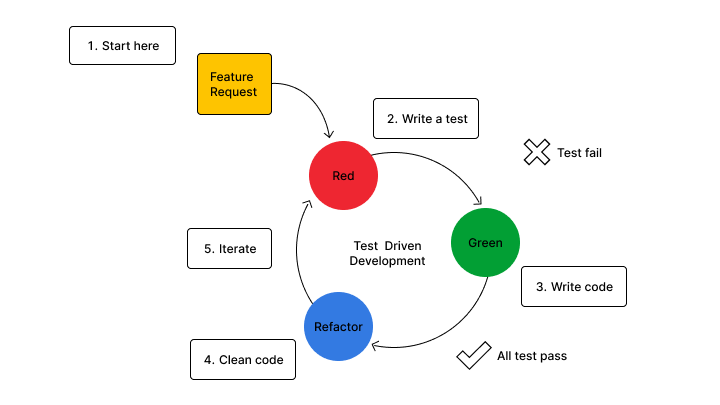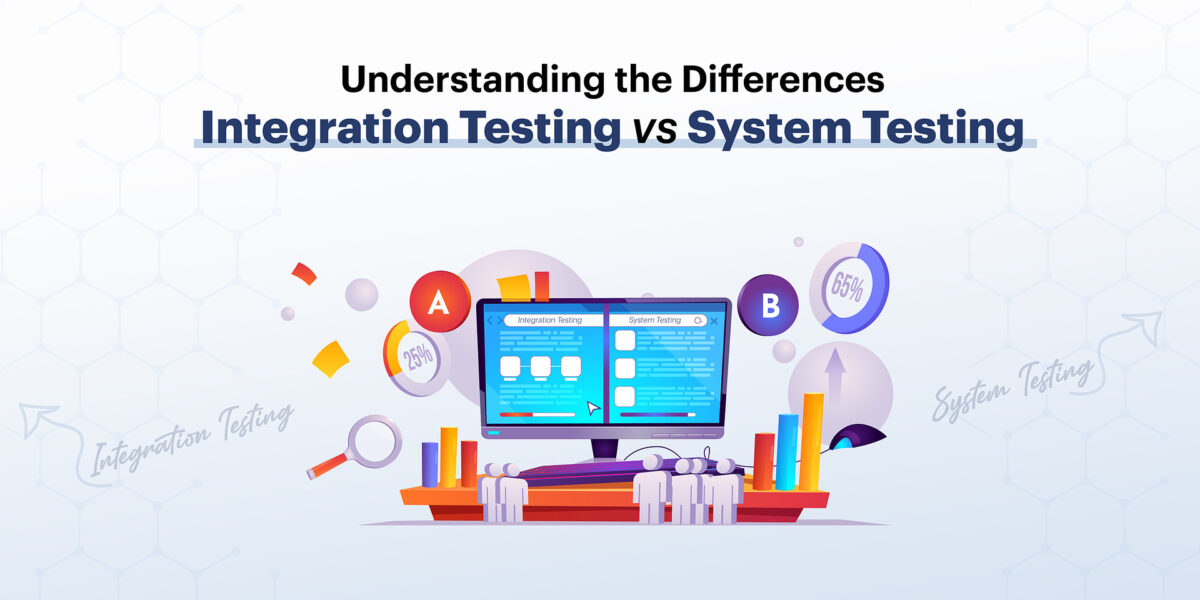These days in the dynamic world of software development, agility & quality, which are the top priorities, are becoming paramount. It’s happening because agile methodologies are emerging as a leading framework that will foster better adaptability, collaboration & iterative progress in software projects.
Other than this in an agile ecosystem, Test Driven Development (TDD) actually stands out as a powerful practice that enhances code quality & reliability. But at the same time people do have less idea about the methodologies as well as the practices. So we are here with this blog, where everyone will get to explore the nuances of TDD in agile methodologies. In this individuals even get a chance to learn about the highlights, benefits & principles of implementation.
So, let’s have a look & learn about the TDD agile methodologies:
What Actually is Test Driven Development?

TDD is mainly a software development practice in which the developers write automated tests for a new feature or function before writing the actual code. The process at this stage involves passing through the three essential stages like:
Red: Write the Code
In this stage, the developers mainly get to write a test for the desired functionality. This is because the code for functionality doesn’t exist yet & can fail. Apart from this, the stage even ensures that the test is actually done to check the specific behaviour of everyone.
Green: Run the Test
Under this, the developers are allowed only to write that much code through which tests can be conveniently passed. The primary focus for developers is to focus on the functionality, not on the optimal code structure.
Refactor: Improve Code Regularly
Once the test is passed, developers have permission to refactor the code to make improvements in structure & readability without compromising the alteration of behaviour. In this phase, tests are also done because this will ensure that refactoring doesn’t introduce any new bugs.
Test Driven Development (TDD) in Agile Methodologies
Methodologies like scrum & extreme programming (XP) emphasise iterative development, frequent delivery, and responsiveness to change. TDD complements these principles in several ways:
Frequent Iterations
Agile methodologies mainly break down the development process and perform the process in short iterations, or sprints. This way, developers get to know timely about the thing at which step and what kind of iterations are performed to make the work go smoothly as well as easily understandable.
Continuous Feedback
After knowing about the iterations, customers & others will get to use them & guide the developers by offering them proper feedback. This way, both sides will get to know if the work is going smoothly or not. Not only this, everyone even gets to know that repetitive testing can be done to avoid any issues once the code goes live.
Collaboration & Communication
Agile even performs collaboration among various cross-functional teams that include developers, testers, and business stakeholders. The proper division of all these teams lets developers have clear communication about the changes in the code with everyone. Apart from this, by testing, everyone will get to know about the requirements as well as the technical & non-technical documentation.
Benefits of TDD in Agile
Now that everyone has understood a bit about the workings of agile methodologies, let’s have a look at the kinds of significant benefits they will get:
Improved Code Quality
The analysis of code through TDD provides improved code quality because, at every step, developers get a chance to test the code properly. This will result in improving the code quality, which leads to fewer bugs & results in hiring quality software.
Early Bug Detection
This is another benefit that, with the help of agile methodology, everyone will get to detect the bug in the code more conveniently. And this will happen because the code is divided into short sprints, which will offer ease in detection as well as correction.
Increased Confidence
A comprehensive test suite provides the developers with the opportunity to improve their confidence. This means they will get to know the code properly & make changes by refactoring it properly.
Faster Development
Now, with the help of TDD, as the code can be detected properly, it would be convenient for everyone to do the development faster. This way, the process will reduce the time spent debugging it & fixing issues later.
In Summary
Test Driven Development (TDD) is a coding approach where tests are created before writing the actual code. This methodology uses the Red-Green-Refactor cycle to ensure the code’s reliability, quality assurance, and maintainability.
TDD provides numerous benefits, such as continuous feedback and enhanced design quality. However, it can also lead to larger codebases and more maintenance work. Despite these challenges, TDD is a valuable method for producing high-quality software, detecting bugs early, and aligning the code with business needs.




